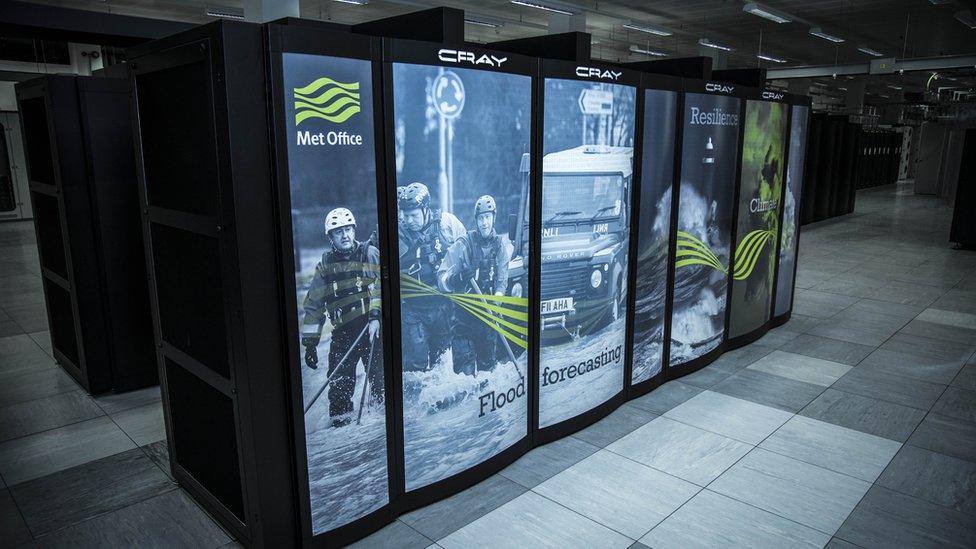Met Éireann signs up for weather forecasting supercomputer
- Published

It is expected that the supercomputer will be up and running by 2023 (stock image)
Met Éireann is joining forces with the national weather services of Denmark, Iceland and the Netherlands to operate a new supercomputer aimed at bringing "significant advancements to short-term weather forecasting".
The supercomputer, built by Hewlett Packard Enterprise, will also be used to advance climate science research.
Emergency services will also use the service to prepare for the potential impact of severe weather.
It is expected to be running by 2023.
Met Éireann, the Irish national weather service, said the collaboration would help communities make better decisions to protect lives, homes and businesses when affected by extreme weather events.
It said the supercomputer will "perform 4,000 trillion calculations per second and handle millions of weather observations every 24 hours".
Director of Met Éireann, Eoin Moran, said the computer would be located in Reykjavik, and "allow for the incorporation of the most up-to-date weather forecasting methodologies".
He told RTÉ, external that the contract for the computer is being signed on Wednesday and the machine should be delivered in the middle of next year, ahead of a rigorous testing process.
The supercomputer is to be powered by "renewable Icelandic hydropower and geothermal energy sources".
Warnings
Irish Minister for Housing, Local Government and Heritage, Darragh O'Brien, said it had "never been more important to provide accurate and timely weather information".
"With Met Éireann uniting their scientific expertise and excellence in numerical weather prediction with the national weather services in Denmark, Iceland and the Netherlands, we will be able to provide more efficient and reliable weather forecasts and warnings to all our citizens to help them make better decisions to protect lives, homes and property," he said.

The supercomputer will be used to help emergency services to prepare for the potential impact of severe weather
Earlier this year, the Met Office said it was working with Microsoft to build a weather forecasting supercomputer in the UK.
It said it will provide more accurate weather forecasting and a better understanding of climate change.
The UK government said it would invest £1.2bn in the project.
It is expected to be one of the top 25 supercomputers in the world when it is up and running in the summer of 2022.
Related topics
- Published22 April 2021

- Published17 February 2020
